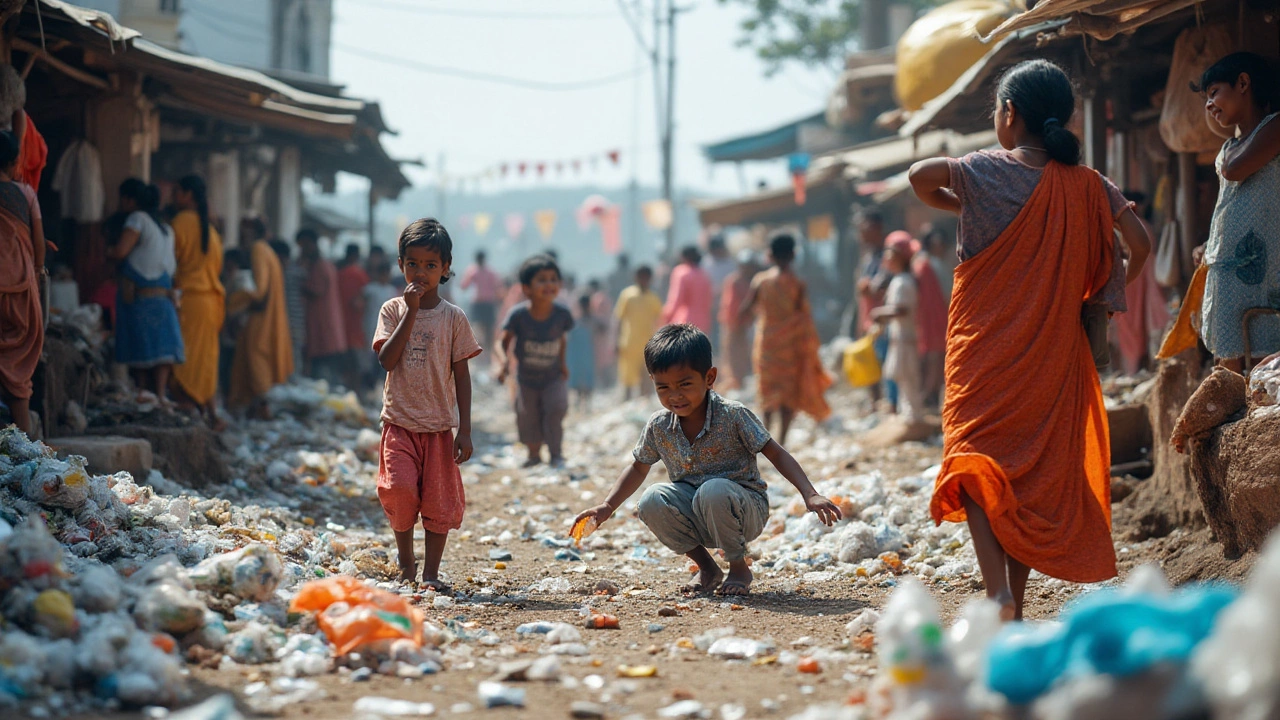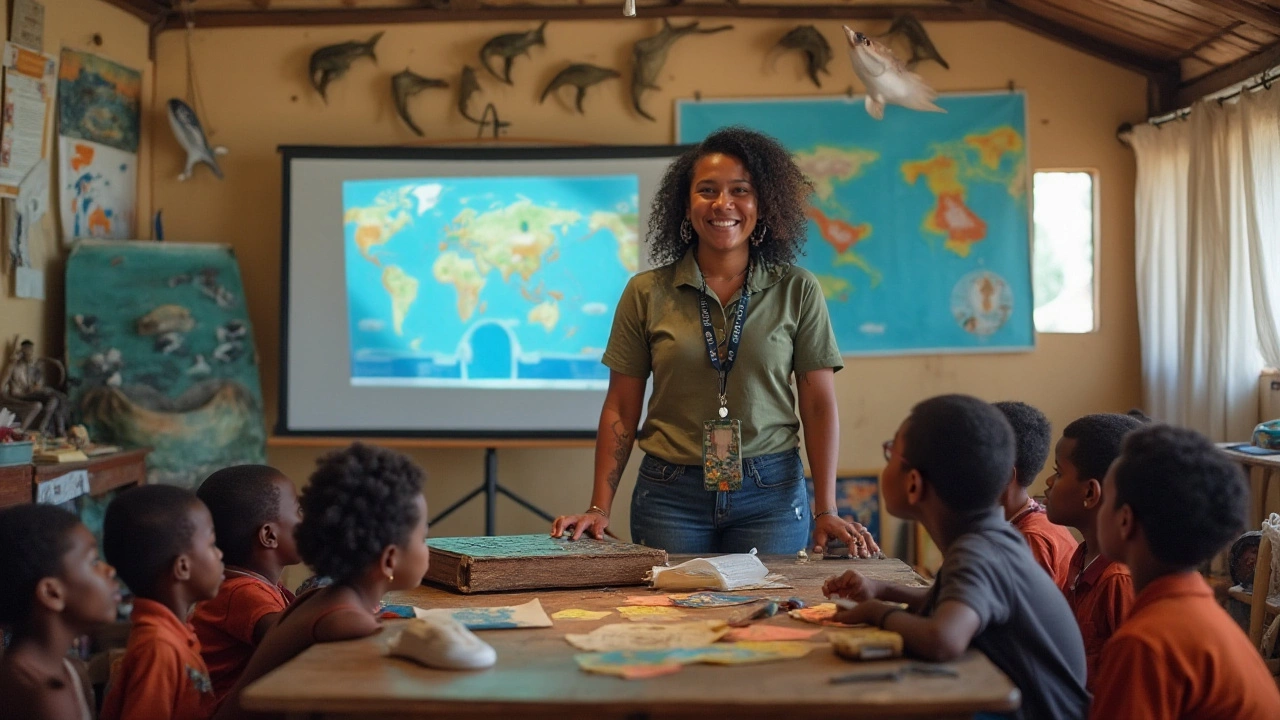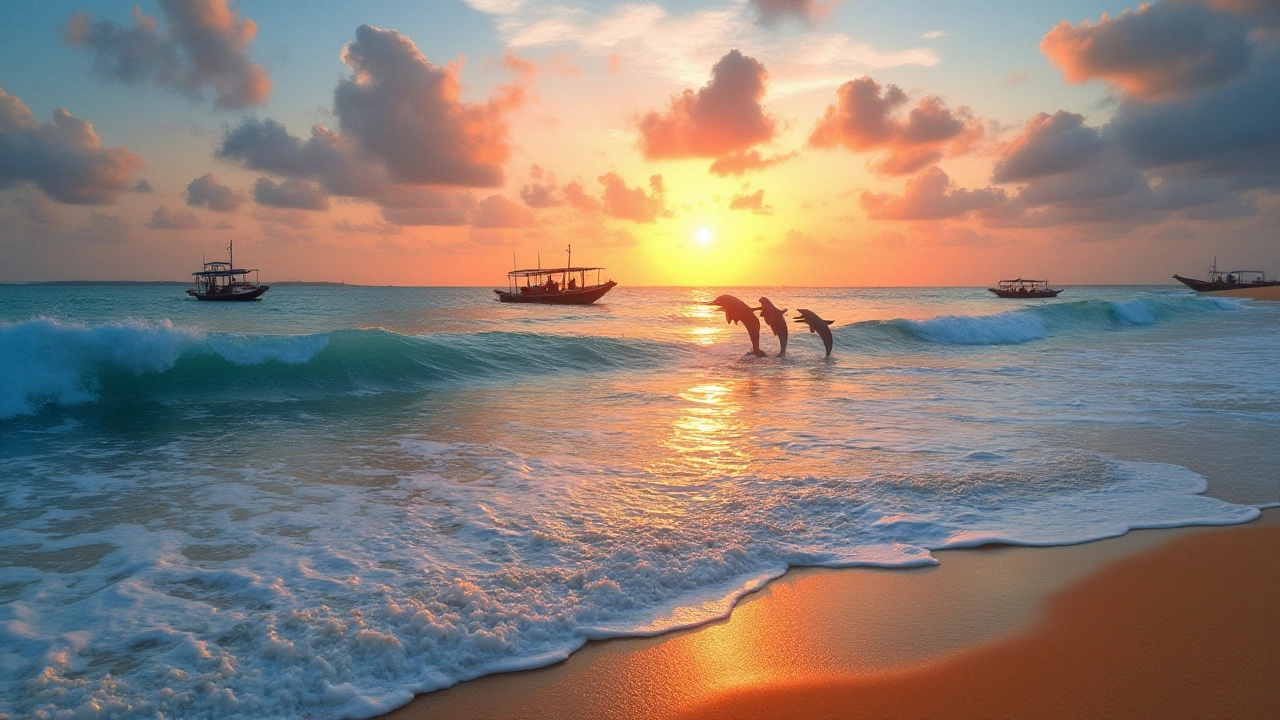The vast expanse of our oceans is both a marvel and a vital resource for life on Earth. These magnificent bodies of water cover most of our planet, acting as a source of livelihood, beauty, and ecological balance. But as human activity has grown, so too has the challenge of keeping our oceans clean and free from pollution.
Plastic waste, a byproduct of modern living, has posed perhaps the most significant threat to marine ecosystems. While many are now aware of the troubling extent to which plastics have penetrated our waters, few know which oceans are faring better than others in this regard. As we turn our gaze to the cleanest ocean, we hope to uncover not just a beacon of hope, but guideposts for better practices and policies.
This article seeks to explore the factors that determine an ocean’s cleanliness, the challenges we face in combating pollution, and inspiring stories that show us how dedicated action can lead to meaningful change. We also look at how individuals and industries, particularly those involved in plastic manufacturing, can adopt more responsible habits to help keep our oceans pristine.
- The State of the Oceans Today
- Identifying the Cleanest Ocean
- The Role of Plastic Manufacturing Companies
- Success Stories of Ocean Conservation
- How We Can Take Action
The State of the Oceans Today
The oceans of our world are among the most dynamic and life-sustaining environments on the planet. From the icy currents of the Arctic Ocean to the teeming coral reefs of the Pacific, these waters cover nearly 71% of the Earth's surface. However, they are under increasing pressure from human activities. Estimates suggest that approximately 8 million metric tons of plastic enter the oceans annually, wreaking havoc on marine wildlife and beaching operations. This amount is akin to dumping a garbage truck full of plastic every minute. When considering the remote reaches of the oceans, one might expect pristine conditions, yet even the Mariana Trench shows traces of microplastics carried by currents from distant shores.
Plastic pollution is not the sole issue, but it is one of the most visible. Chemical runoff from agriculture, unsustainable fishing practices, and the warming effects of climate change compound the situation. The Intergovernmental Panel on Climate Change (IPCC) reports that oceans have absorbed over 90% of the excess heat generated by greenhouse gases since the 1970s, leading to rising sea levels and dramatic shifts in marine biodiversity. In places like the Great Barrier Reef, these changes manifest as severe bleaching events, critically impacting the ecosystem's health.
Oceans are the lifeblood of our planet, and yet our activities are putting them at risk," stated a United Nations Environment Programme report on marine litter. "The need for combined global action has never been more urgent.
In terms of cleanliness, some regions are better protected than others. The Southern Ocean, for instance, remains relatively less affected due to its remote location and stringent environmental protocols in place under the Antarctic Treaty System. These protections, however, must be vigilantly maintained against the ever-encroaching threats of overfishing and mineral exploration. Within the framework of our connected world, the responsibility of maintaining ocean health falls upon both local and global shoulders.
Threats in Focus
Certain global initiatives are underway to combat these challenges, with significant efforts coming from governments and NGOs in pushing for a reduction in single-use plastics and improving waste management infrastructure. The 'Clean Seas' initiative is an ongoing project that garnered international cooperation aimed at reducing marine litter. Public awareness campaigns also empower communities to participate in coastal clean-up efforts, which not only help reduce local pollution but also increase engagement and commitment to broader sustainability goals.
Despite these initiatives, the balance is delicate, and more cohesive action is needed. We must move from reactive to proactive strategies, intervening before plastics and pollutants enter water systems. It begins with legislative changes to incentivize sustainable business practices and transform consumer habits. As individuals, we play a crucial part by opting for sustainable choices, advocating for stronger protections, and supporting clean-up and conservation endeavors.
Identifying the Cleanest Ocean
When it comes to determining which ocean can lay claim to being the cleanest, it's essential to consider several key factors. These include water quality, levels of pollution, biodiversity, and efforts in conservation. Historically, the Southern Ocean surrounding Antarctica is often heralded as the least contaminated due to its remote location and limited human impact. Its icy waters, teeming with marine life, remain relatively untouched by industrial activities, making it a contender in the race for cleanliness.
Among the contributing factors to this cleanliness are the strict international treaties and protocols, such as the Antarctic Treaty System, that restrict activities harmful to the environment. Additionally, the currents of the Southern Ocean play a significant role in its cleanliness by circulating the waters around Antarctica swiftly, effectively dispersing and diluting pollutants. Yet, as one delves deeper into the specifics, it's important to acknowledge that no ocean is entirely free from human impact.
In contrast, the deep blue hues of the Pacific Ocean might seem inviting, but they hide an uncomfortable truth of massive swathes of plastic debris. The Great Pacific Garbage Patch is emblematic of the challenges facing oceans worldwide. Yet, even within the Pacific, regions like the South Pacific Gyre have shown signs of resilience and recovery due to conservation efforts led by global and local entities.
"The health of our oceans is intimately tied to the health of our planet. By improving one, we invariably improve the other." — Sylvia Earle, acclaimed marine biologist
While natural resilience is a powerful ally, human intervention can often tip the scales. The Indian Ocean, for instance, faces an array of challenges—from oil spills to heavy shipping traffic. However, initiatives such as coral reef restorations and the reduction of plastic waste through regional cooperation have been pivotal in maintaining its health to a degree. According to research, regions most actively engaging in cleanup efforts and adopting sustainable practices invariably boast cleaner waters.
Understanding the health of these vast marine environments involves the analysis of extensive data. Researchers look at indicators such as levels of dissolved oxygen, the presence of nutrients, and pollutants. An outstanding fact is a gradual increase in marine sanctuaries and protected areas contributing significantly to cleaner oceans. In the North Atlantic, compared to a mere decade ago, there’s enhanced monitoring and cleanup operations in place, which are starting to yield visible improvements.
Factors Influencing Ocean Cleanliness
Identifying a single "cleanest" ocean might be elusive. Still, evaluating the aforementioned factors enables us to monitor and manage the health of our marine ecosystems better. A combined effort of international policy-making, local actions, and technological advances remains essential. Incorporating groundbreaking innovations like ocean-cleaning drones and biodegradable materials can aid in preserving these vital water bodies for future generations. The collaboration between governments, corporations, and individuals determines the success in keeping our oceans cleaner, underscoring the notion that combined effort is paramount in ocean conservation.
The Role of Plastic Manufacturing Companies
The impact of plastic manufacturing companies on our oceans cannot be understated. They play a pivotal role in influencing the degree of plastic waste that ultimately ends up in these aquatic realms. For years, these companies have contributed to the production of materials that, while convenient, have led to environmental degradation. The oceans currently hold an estimated 150 million tonnes of plastic waste, a significant portion of which stems from short-lived packaging applications. Yet, amidst this grim reality, industries are beginning to recognize the critical need for change. The shift toward sustainable practices has been slow, yet steadily gaining momentum, with companies exploring innovative methods to minimize their environmental footprint, such as biodegradable materials and improved recycling systems.
Some leading companies have taken commendable steps by investing in research for alternative materials and partnering with NGOs to fund cleanup projects. These initiatives serve as a testament to the growing acknowledgment within the industry that their actions hold weight in determining the future health of our oceans. A notable example is the pledge by several global corporations to make 100% of their packaging recyclable or reusable by 2025. Such commitments highlight a growing responsibility to mitigate the effects of their products on the marine environment. This trend, albeit nascent, is indicative of a broader shift in mindset that equates corporate success with sustainability.
The New Plastics Economy Global Commitment, led by the Ellen MacArthur Foundation in collaboration with the UN Environment Programme, is a leading example of industry-wide efforts that aim to create a circular economy for plastic. Their commitment aims to act as a driver for companies to hold themselves accountable for changes in plastic use and recovery.
While progress is being made, the pace and extent of changes are not uniform across the industry. Numerous challenges remain, including financial constraints in transitioning to more sustainable materials and technologies. Despite these obstacles, companies are beginning to understand that investing in sustainable practices can lead to long-term benefits, not only for the environment but also for their business reputation and economic resilience. At the heart of these efforts lies a growing recognition of the need to protect the most vulnerable ocean habitats from the negative impacts of plastic waste. It's evident that as the conversation around ocean health gains traction, so too does the imperative for plastic manufacturers to innovate responsibly.
As consumers, stakeholders, and governments continue to press for tangible changes, the role of these companies is more critical than ever. Their actions can significantly influence public perception and set industry standards, driving regulatory changes and encouraging innovation. A joint effort between industries and consumers is essential to ensure the transition toward more sustainable practices is both effective and enduring. By leveraging advancements in technology and materials, these companies have the potential to pioneer new frontiers in ocean conservation, underpinning the hope for cleaner, healthier oceans that stand resilient against plastic pollution.
Success Stories of Ocean Conservation
When it comes to conserving our oceans, success stories shine a light on what dedicated efforts and innovative strategies can achieve. One such inspiring tale comes from the pristine waters of the Palau archipelago in the Pacific Ocean. Faced with the threat of overfishing and environmental degradation, the government took drastic measures, declaring an expansive marine sanctuary back in 2015, effectively making 80% of their maritime territory off-limits to commercial fishing. Not only did this protect Palau's unique marine biodiversity, but it also allowed fish stocks to recover naturally. This bold move has been a benchmark for ocean conservation globally, emphasizing the importance of protecting the natural environment before commercial interests.
The Great Barrier Reef, often referred to as a vital marine ecosystem, also serves as a symbol of hope in the face of adversity. The Australian and Queensland governments have initiated the Reef 2050 Plan, a collaborative effort pooling resources from scientists, conservationists, and policymakers. Through consistent monitoring, reduction in nearby industrial development, and community awareness programs, the plan seeks to increase reef resilience against climate change impacts. This long-term vision reflects a commitment to merging localized action with wider policy support, illustrating that proactive management plays a crucial role in conservation.
Innovative approaches are also surfacing in unlikely places. Consider the Plastic Bank initiative, which offers a unique approach to tackle both social and environmental issues. Founded on the idea of preventing ocean-bound plastics at their source, the program encourages communities in impoverished regions to collect plastics in exchange for essentials like food, fuel, and school tuition. Not only does this help keep the oceans cleaner, but it empowers people economically, creating a blend of conservation and social responsibility. This initiative has led to the collection of millions of kilograms of ocean-bound plastics, demonstrating a proactive way to engage communities worldwide in the fight against pollution.
"Plastics essentially rip away the protective layers of ocean integrity; our task is to weave it back again by engaging communities and industries alike,” said David Katz, founder of Plastic Bank.This sentiment underscores the holistic strategies required to address ocean cleanliness. In another instance, the Seychelles has taken an innovative financial route by establishing a debt-for-nature swap. This groundbreaking financial agreement facilitated the protection of large segments of its territorial waters in exchange for restructuring national debt, highlighting the role of creative financial instruments in conservation efforts.
These success stories serve as powerful reminders that collaborative human effort can navigate not just through policy and protections but uniquely align different societal facets towards a shared environmental goal. It's about more than just reducing plastic pollution; it's reframing how we value oceans, integrate advanced and equitable solutions, and recognize that our oceans' health is inextricable from our future. As more stories emerge, they remind us of the resilience of nature when given the opportunity to rehabilitate, showcasing that with commitment, the path to a cleaner, sustainable ocean isn't just a distant aspiration but an attainable reality.

How We Can Take Action
Taking steps to preserve the cleanliness of our oceans requires a concerted effort from individuals, communities, and industries alike. Our actions, no matter how small, can collectively lead to significant change. Starting at the individual level, we can all become mindful consumers. Conscious choices, like reducing single-use plastics and opting for recyclable products, directly impact the demand for these harmful materials. Participating in or organizing local beach cleanup events can also be a great way to mitigate plastic pollution, simultaneously raising community awareness about the importance of ocean conservation. Such activities can be rewarding, fostering a deeper connection with the marine environment and promoting healthier habits.
Industries, particularly those involved in plastic manufacturing, need to take responsibility for the life cycle of their products. Innovating towards biodegradable alternatives and reducing plastic production can significantly lower future oceanic pollution. Additionally, supporting and investing in existing projects that focus on recovering plastics from the ocean and improving recycling infrastructure can offer viable solutions. In fact, more companies are now embracing closed-loop models, where materials are continually reused rather than discarded.
Sustainable policy advocacy can greatly influence governmental change. By writing to legislators, supporting eco-friendly policies, and voting for environmental stewardship, citizens can drive broader legislative reforms that prioritize the health of our marine environments. These reforms might include stricter regulations on waste disposal and incentivizing companies that successfully minimize plastic usage.
Schools and educational programs can play a pivotal role in shaping future generations' attitudes towards the environment. Implementing curriculum focused on the impacts of plastic pollution on marine life can instill an understanding early on. Educational outreach and workshops for the public can broaden this understanding, fostering an informed population that advocates for sustainable practices.
Measuring the effectiveness of these actions can be supported by data-driven approaches and research. Initiatives like the Ocean Clean Up, which aims to remove plastics from the world's seas, have demonstrated how technology and commitment can make a substantial difference. A combination of satellite imagery and ocean-current mapping helps predict and target areas of heavy pollution, optimizing clean-up operations.
Lastly, a meaningful quote to encapsulate individual power in this collective effort could be:
"Never doubt that a small group of thoughtful, committed citizens can change the world; indeed, it’s the only thing that ever has." - Margaret MeadEngaging with these strategies could ensure that our oceans remain a thriving home for diverse marine life and a resource for future generations. Together, each action—no matter how insignificant it seems—contributes a vital ripple in the wave of change required to maintain the beauty and biodiversity of the Earth’s waters.
